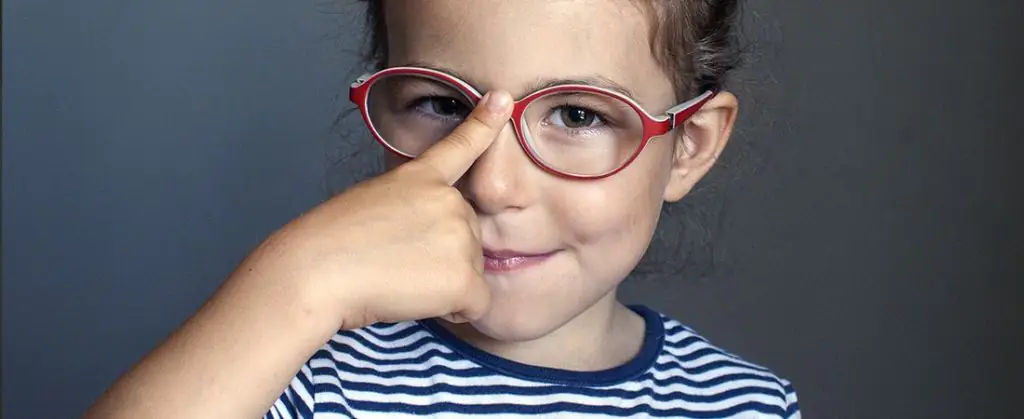Ever heard of cataracts? You must be and we usually think it’s a grandparent thing, right? Well, surprise! It can happen to kids too. Through this comprehensive blog, we will be diving into the world of “Cataracts in children.” We’re here to discuss why it happens, how we can spot it, and what we can do to keep those little eyes’ vision crystal clear. So, let’s embark on this knowledge journey together!
What Are Cataracts in Children?
Cataract in kids means clouding of the eye lens during the infant stage causing treatable blindness. It can be unilateral (affecting one eye) or bilateral (affecting both eyes). Some pediatric cataracts are small and don’t cause any trouble with vision. Other more progressive ones can cause visual problems.
Types of cataract in children?
A child may be born with childhood cataracts or develop it at a later stage. And based on the cause behind, it is categorized in multiple types, such as:
Congenital Cataracts:
- How It Happens: Congenital cataracts is the kind of pediatric cataract that occurs at birth or develops during early childhood. They can result from genetic factors, metabolic disorders, or infections during pregnancy. In some cases, they may be hereditary.
- Risks: Visual impairment can affect a child’s overall development if not addressed early.
Traumatic Cataracts:
- How It Happens: Traumatic cataracts is a type of cataract in children that develops as a result of eye injuries, such as blunt trauma or penetrating injuries. The lens becomes cloudy due to damage caused by the trauma.
- Risks: The risk factors include sports without proper eye protection, workplace accidents, or car accidents. Prompt medical attention is crucial to minimize the impact on vision.
Secondary Cataracts:
- How It Happens: Another kind of pediatric cataract is secondary cataracts that can develop after eye surgery. In some cases, lens capsule cells that were not removed during the initial surgery may proliferate and cause clouding of the lens.
- Risks: Lack of visual acuity that may hinder near and far vision. Difficulty in the perception of colors as well as while driving at night.
Radiation Cataracts:
- How It Happens: Exposure to ionizing radiation, such as that used in cancer treatment or nuclear accidents, can lead to the development of radiation cataracts in childrens. The lens of the eye is sensitive to radiation, and prolonged exposure can cause clouding.
- Risks: Protective measures, such as shielding, are used during radiation therapy to minimize the risk of radiation-induced cataracts.
Each type of cataract in children has its own set of causes and associated risks. Prevention and early detection are crucial for managing cataracts effectively.
Causes of Cataracts in Children
There are multiple reasons that may cause cataract in kids like injury, diabetes, poisoning, steroid use, and other illnesses. Besides that, there are a few more reasons, such as:
- It may be inherited from the parent to the child
- Passed from genetic conditions like Down’s syndrome
- Infection picked up at the time of birth, diabetes, inflammation, drug reaction, diabetes, or metabolic problems
Though there are various reasons for developing a cataract, it is essential to know the exact cause and treat them while children are young.
Symptoms of Cataracts in Children
Cataracts in children can occur in one or both the eyes. The significant signs are
- Cloudy or White Pupil:
One of the most noticeable signs is a white or cloudy appearance in the pupil. This can be observed in flash photographs as a white reflection instead of the typical red-eye.
- Poor Vision:
Children with cataracts may experience a gradual or sudden decrease in vision. They may have difficulty seeing objects clearly or have problems with depth perception.
- Strabismus (Crossed Eyes):
Cataracts can lead to misalignment of the eyes, resulting in strabismus or crossed eyes. This occurs when the eyes do not move together in the same direction.
- Nystagmus (Involuntary Eye Movement):
Some children with cataracts may exhibit rapid, involuntary eye movements, known as nystagmus.
- Sensitivity to Light:
Children with cataracts may be more sensitive to light (photophobia). They might prefer dimly lit environments and shield their eyes in bright light.
- Rubbing or Squinting:
Children may rub their eyes frequently or squint in an attempt to see more clearly. This can be a sign of visual discomfort.
- Delayed Motor Development:
Children with cataracts may experience delays in reaching developmental milestones that involve hand-eye coordination and spatial awareness.
- Inattentiveness or Lack of Interest in Visual Stimuli:
Children may show disinterest in visual stimuli that require visual attention if they are struggling with vision due to cataracts. It’s important for parents to be vigilant.
- Squint Eyes:
Not just this cataract can cause misaligned eyes (squint eye) or wobbling eyes, and uncontrollable eye movements (nystagmus).
How Are Cataracts Diagnosed in a Child?
- Medical History: Gather information about birth, family eye history, and any vision-related changes.
- Visual Acuity Test: Assess the child’s ability to see at different distances using an eye chart.
- Dilated Eye Exam: Dilate pupils to examine the lens and internal eye structures thoroughly.
- Slit-Lamp Examination: Use a microscope-like instrument to examine the eye structures, including the lens.
- Cycloplegic Refraction: Determine refractive error after pupil dilation to prescribe corrective lenses.
- Electrodiagnostic Tests (if necessary): Conduct additional tests like ERG or VEP to assess retinal and visual pathway function.
- Prompt Intervention: If cataracts are detected, timely surgical removal is essential for better visual outcomes and preventing developmental delays.
How to Treat Cataract in Children?
Cataracts in children should be removed as soon as possible within the first few weeks when the child is born. The surgeon will remove the lens through a small incision and choose any of the alternative options available like an artificial lens, contacts, or eyeglasses.
Eyeglasses:
Pros:
- Non-Invasive: Eyeglasses are a non-invasive option that can correct vision without additional surgical procedures.
- Easy to Use: They are easy to use and maintain, making them a practical choice for children.
Cons:
- Dependency: Children may become dependent on wearing glasses, and compliance can be a challenge, especially in younger age groups.
- Potential for Breakage: There is a risk of glasses getting lost or broken, which may require frequent replacements.
Contact Lenses:
Pros:
- Wider Field of View: Unlike glasses, contact lenses provide a wider field of view, which can be beneficial for certain activities.
- Less Obtrusive: Contacts are less obtrusive than glasses and may offer improved self-esteem for some children.
Cons:
- Hygiene Concerns: Contact lenses require proper hygiene, and young children may struggle with inserting, removing, and caring for the lenses.
- Risk of Infection: Improper use or poor hygiene can lead to eye infections.
Intraocular Lenses (IOLs):
Pros:
- Permanent Correction: IOL Lens provide a more permanent correction of vision and eliminate the need for external devices.
- Reduced Dependency: Children may experience reduced dependency on glasses or contacts after IOL implantation.
Cons:
- Surgical Procedure: The insertion of IOLs involves a surgical procedure, which carries inherent risks.
- Limited Adjustability: IOLs may not be as easily adjusted as glasses or contact lenses, and changes in vision might require additional surgeries.
Bottom Line:
In conclusion, understanding cataracts in children is vital for parents and caregivers. From recognizing early signs to exploring treatment options such as surgery, the journey involves careful consideration and collaboration with pediatric eye care professionals. Prioritizing timely diagnosis and intervention is crucial for ensuring optimal visual development in children. By staying informed and proactive, parents can navigate the challenges associated with childhood cataracts and pave the way for a brighter and clearer future for their little ones.
Why Centre For Sight?
To help you deal with your Childhood cataract, Centre for Sight offers the latest technology and has the expertise of pediatric eye surgeons. We are considered as one of the leading eye hospitals in India and provide the world’s leading laser-automated technology for cataract surgery. The best part is that not only Cataract Surgery, you will find a wide range of eye care surgeries like Contoura Vision, ICL, Lasik & Refractive Surgery. So, don’t hesitate to schedule an eye test if you feel that you might need assistance.
FAQs
Can cataracts in children be prevented?
Preventing cataracts in children is challenging, as they are often congenital or related to underlying conditions. Timely medical care and addressing associated health issues can help manage their impact.
What are the risks of cataract in children?
This is a placeholder tab content. It is important to have the necessary information in the block, but at this stage, it is just a placeholder to help you visualise how the content is displayed. Feel free to edit this with your actual content.
How are cataracts treated in children?
Cataracts in children are treated with surgery, involving the removal of the cataract and options like intraocular lenses, contact lenses, or glasses for vision correction, depending on the child’s age and specific needs.
How much time does a child take to recover from a cataract treatment?
The recovery time for a child after cataract treatment generally takes a few weeks. Factors such as the type of treatment, the child’s overall health, and adherence to post-operative care guidelines influence the recovery period.
How will cataracts affect my child’s vision?
Cataracts in children cause blurry vision, impacting normal visual development. Timely diagnosis and intervention are essential for optimal outcomes.





